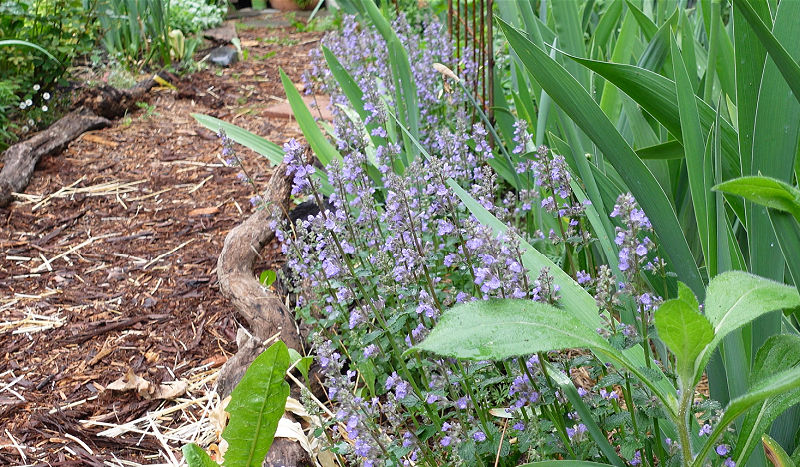Exploring the Enchanting World of Nepeta
Have you ever heard of Nepeta? I am a recent convert to this easy-growing perennial and I love it in my garden.
Nepeta, commonly known as catnip or catmint, is a herbaceous plant that is appealing to both humans and feline friends for many reasons.
Today, we will enjoy learning more about Nepeta, uncovering the differences between catnip and catmint, along with their benefits, uses, and why they’re such a great plant to grow in your garden

Catnip vs. Catmint: Are They the Same?
Before we talk about their individual characteristics, let’s clarify the distinction between catnip and catmint.
Catnip (Nepeta cataria) is a specific species of Nepeta, known for its effect on cats.
On the other hand, catmint refers to several other Nepeta species that are equally beautiful and aromatic but may not have the same intense effect on cats.
I have a few different catmint varieties in my garden and my cats do not seem to be attracted to them any more than any other plant.

Characteristics of Catnip (Nepeta cataria):
Catnip, scientifically known as Nepeta cataria, is the species that triggers the classic cat response. It features:
- Square stems and serrated leaves.
- Clusters of small, white flowers with lavender spots.
- It contains nepetalactone, the compound responsible for cats’ euphoric reactions.
Characteristics of Catmint (Other Nepeta Species)
Catmint encompasses various Nepeta species, each with its unique charm:
- Lavender, pink, or white flowers that attract pollinators.
- Aromatic foliage with a minty scent.
- Is less potent in eliciting the “crazy cat” behavior.
- Has been used for herbal remedies, culinary purposes, and garden ornamentals.

Benefits and Uses
- Cat’s Delight: Catnip (Nepeta cataria) is a natural playground for cats due to its nepetalactone content. It grows to be up to 40 inches tall though mine has gotten much taller. The small flowers of Nepeta cataria are fragrant and are either pale pink in color or white with fine spots of pale purple.
- Medicinal Properties: Both catnip and catmint have been used for their calming and soothing effects in herbal teas. They may help alleviate stress, and anxiety while promoting relaxation. Consult a healthcare professional before use.
- Garden Charm: Catmint’s aromatic leaves repel pests and attract pollinators, while its blossoms add color and beauty to gardens. They are also deer-resistant and some claim they are deer-proof. Mine has been completely left alone by the deer.
- Culinary Uses: Certain catmint leaves and flowers are edible and can add a mild minty flavor to dishes.
Caring for Catnip and Catmint
Growing both catnip and catmint follows similar guidelines:
- Sunlight: Both plants thrive in sunlight, requiring about 6 hours of direct exposure.
- Well-Draining Soil: Use well-draining soil to prevent root issues.
- Watering: Allow the soil to slightly dry between waterings.
- Pruning: Trim after blooming to encourage additional flowers.
- Propagation: Cuttings and divisions can be used to propagate these plants.
It must be noted that catnip, like any mint plant, can become a bully in the garden and be hard to control. Just a fair warning!
Be sure to cut back flowers to prevent aggressive reseeding.
Though I have catnip in my garden it is becoming quite huge and needs to be constantly cut back to keep in check. But where it is planted the deer leave everything alone.
Gophers don’t like it either so I am thinking of using it as a mulch by cutting off branches and chopping it up then laying it on the ground around other plants. Who knows, it may help deter the deer from those plants too.
Plus, cutting it back may keep it more manageable. I have yet to try and make a tea with the leaves but I shall research that and do so in the future.
If you want the benefits of growing Nepeta without worrying about it becoming a bully then watch for my post on Nepeta x Faassenii.
Watch the video here…






